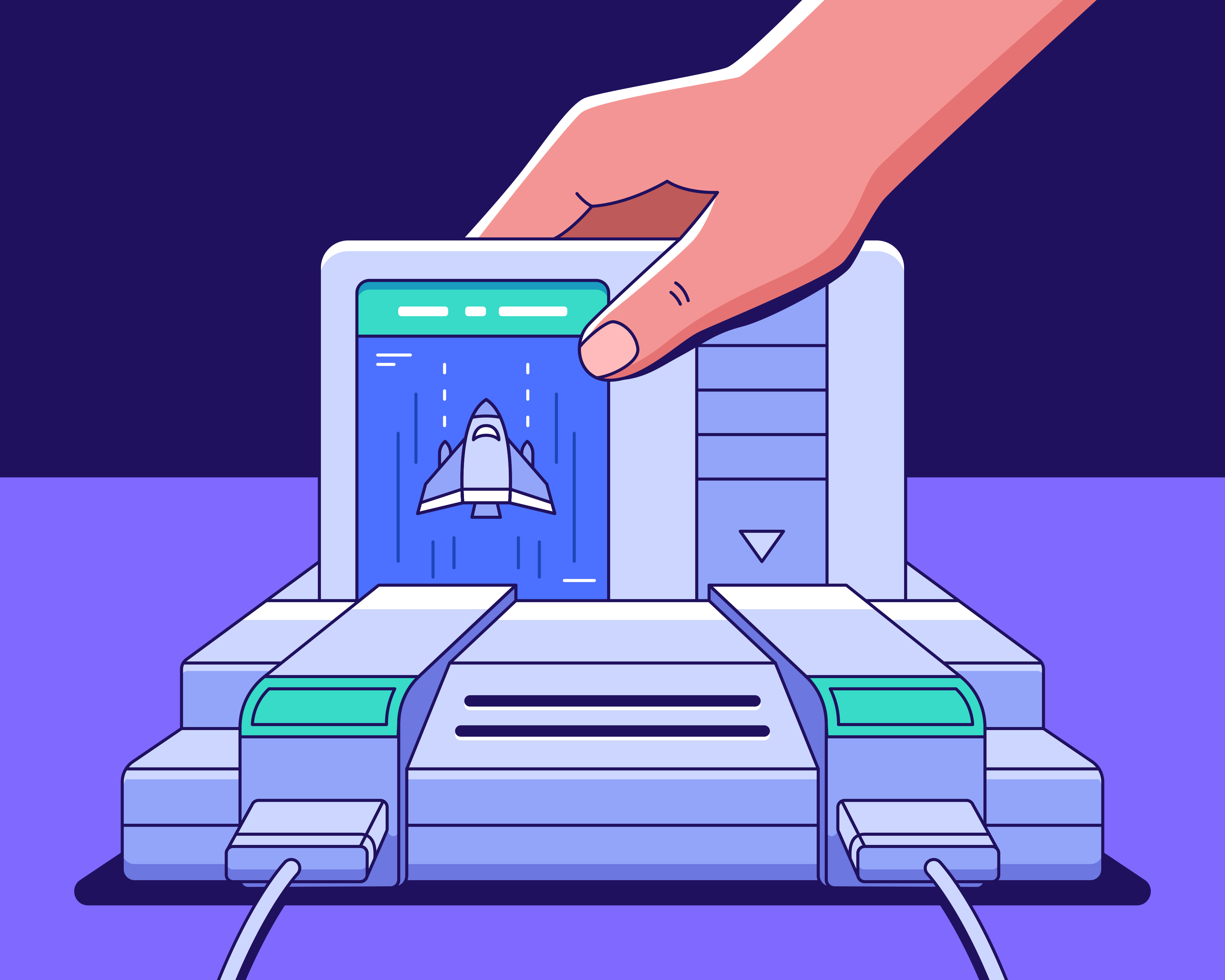Partner Websites & The Rise Of Ecosystem-Based Marketing

For CMOs, Brand & Product Marketers, and Channel Leaders
If you’re a technology marketer, your directive probably looks something like this:
– Scale reach with buyers to build awareness, trust and preference, to increase sales and revenue –
Channel is an extension of this in that partners help scale reach with end buyers, influence purchase decisions and expand sales beyond internal teams, resulting in increased revenue often coupled with faster close rates and lower CAC.
To help achieve the directive, heavy investments are made into marketing with large budget allocations dedicated to complex data schemes and paid media strategies: social, search, display, native, ABM, intent data, retargeting, etc.
Budgets increase, tech stacks sprawl, the promises of data get loftier, and complexity quickly grows out of control.
All the while, there’s a marketing channel sitting at your fingertips through which high-propensity, high-intent buyers are easily accessible during the exact moments in which they’re hungry for solution information – partner websites.
Chances are, however, you’re nowhere to be found.
The Canary In The Coal Mine
We worked with PartnerOptimizer to audit tens of thousands of partner websites. We looked specifically at through-partner brand representation, solution content presence and content recency. The results are eye-opening:
On average, only 35% of partner websites accurately represent the vendors and vendor solutions being sold by those partners.
The two most consistent gaps are:
- Invisibility – No vendor branding or solution content present at all to support the vendor-partner relationship
- Outdated content – Solution content is outdated, carrying average publishing dates from 2022 or prior (to put this in perspective, this means that AI isn’t even in the conversation)
The net effect – if you are invisible to buyers, or your products seem irrelevant to buyers due to outdated content, you’re harming your brand, pushing buyers to competitor solutions and leaving revenue on the table…not really inline with the directive.
It’s Not A Marketing Problem – It’s A Strategic Gap Coupled With Process Breakdown
Given how widespread the representation gap is, it’s important to understand why it exists and persists. Vendor teams are producing tons of content and building programs to scale targeted distribution and exposure. Partners are vested in quality marketing operations that paint both their businesses and the solutions they offer in the best light possible as to attract and do business with end buyers. Seems pretty much hand-in-glove…so what’s the rub?
On the vendor side, functional silos between brand, product and channel tend to derail collaborative effort and effects. Brand and product marketers are measured on marketing metrics related to direct-to-end buyer reach and engagement, with little channel interplay. Channel is measured on through-partner revenue often without accountability to marketing. As such, activating and measuring partner websites as a marketing channel isn’t assigned to anyone. Therefore, it doesn’t happen.
To better understand the partner perspective, we asked them about it. Partner responses were clear and consistent. They agree that maintaining vendor brand visibility and current content about vendor solutions is important. They also agree that they run the risk of irrelevancy when their resources are out of date. However, their biggest hurdles to maintaining adequate vendor representation are time and process. They don’t have time to support the manual processes associated with maintaining current, accurate representation on their websites for the upwards of 20 vendors that they work with. (And no, CMS/DAM functionalities within your PRM are not the answer as these tools require a push-pull manual process.)
The lack of cross-functional strategy on the vendor side coupled partner process breakdown creates through-channel marketing blind spots, spawning program dissonance and fractured end buyer experiences.
Fix the process. Fill the gap. Power your ecosystem.
Partner Websites Aren’t Important Though…Or Are They?
It used to be that you could run Account-Based Marketing (ABM) programs to target individual accounts, drive traffic back to a landing page, get some wins and distribute leads out to partners.
The days of linear GTM motions are over.
Fast forward to today and the foreseeable future and it’s all about buyer-led, Ecosystem-Based Marketing (EBM).
Suraj Atreya , a Field and Partner Marketing Leader at Rackspace Technology, so perfectly stated, “Each enterprise deal today is a network of accounts + partners + platforms + commitments moving in sync. Buying is distributed across hyperscalers, GSIs, ISVs, and data ecosystems that shape customer decisions long before your SDR books a meeting.”
I couldn’t agree with Suraj more, though I’ll extend this buying behavior to SMB and mid-market as well.
Ecosystems surround your buyers to serve as the very fabric of influence that guides purchase behavior.
The power of EBM comes through mapping your buyers to their ecosystems and planning activation accordingly. In doing so, you’ll move beyond ABM to influence entire cohorts of buyers while meeting them where they are, which goes a long way when it comes to building authority and trust.
Examples of what may be included in buyer ecosystems are:
- Review sites like G2
- Marketplaces like the SAP Endorsed App Marketplace
- Social media
- Analysts like Jay McBain
- Industry publications
- Trade shows
- Thought leadership
- Peer networks
- Strategic alliances
- Complementary vendors
- Consultancies like Bridge Partners and AchieveUnite
- And yes, AI
Consistently found across essentially all buyer ecosystems are partners. When you consider that the average buyer now works with up to seven partners during their research, purchase and implementation processes, you can consider partners to be an ecosystem in unto themselves.
However, if you look at your budget, you’ll probably not find line items or team allocations associated with activating and measuring partner websites as a marketing channel in the same way you will see line items for other ecosystem components like G2 and Gartner. (Another symptom of the strategic gap.)
It’s time to rethink this. It’s time to reconsider how partner websites can serve your marketing strategies and assign resources accordingly. EBM requires 2% of 50 different things to come together in a well-orchestrated manner. Partner websites are an easy 2% to activate.
This Sounds Great, But What Are The Impacts On Revenue
Let’s hear from the experts on this:
Crossbeam reports that ecosystem-led deals are 53% more likely to close at a 46% faster rate and that these deals are often larger than direct deals and typically carry lower CACs
In the Bridge Partners 2025 Ecosystem Compass Report 64% of surveyed organizations say more than half of their new customers come via partner-influenced deals
In short, ecosystem-led deals help you scale reach, logo acquisition and revenue, faster, and at lower costs. Pretty much the holy grail of business!
This is probably a good time to bring up the Pareto Principal stating that 80% of your revenue is coming from 20% of your partners. Though, based on recent conversations with channel leaders, the ratio is probably closer to 95:5.
Simple test – look at your through-partner representation as it exists today on websites belonging to your top 20% (or 5%). Then look at your representation across the other 80% (or 95%). See the correlation?
If you could enable more of your partners to consistently represent your brand and solutions to end buyers, do you think there would be a positive impact on revenue?
Channelscaler , EULER and xAmplify are building capabilities centered on making partner business easier and automated. Reach out to your AE and ask if they have a capability or integration that you can tap into.
AI-powered marketing platforms, like Structured , offer automated distribution capabilities as part of larger, multi-channel programs. If you’re building something bigger, this may be the right solution for you.
Talk to the consultants you work with. Bridge Partners and AchieveUnite are two of the best. They are there to help you assess your needs, find the best solutions and create best-in-class partner programs.
And finally, look to point solutions like ChannelBridge.AI , that are singularly focused on solving for this specific representation gap. Working with a point solution gives you the flexibility to build your own toolbox, often at lower costs, while enhancing overall strategy and partner experience.
Regardless of the route you take, it’s important to first map partner websites into your ecosystem strategy so that you understand the implications across your organization and how best to measure performance. This will help you maximize and measure program ROI.
Speaking Of Measurement
We’re in an age where everything must be measured. Measurement gives us the data that guides our understanding of strategy performance.
The first step of measurement is establishing baselines. This will help you understand where performance stands today and how strategies have moved the related needles. To this end, it is important to understand what metrics quantify performance to ensure the value of your reporting.
Every organization is different, but here are several ideas of how the impacts of activating partner websites can be measured across your organization:

Let’s Wrap It Up Already, TL;DR
Partner websites are no longer passive real estate. They are active, high-trust points of influence sitting directly inside the ecosystems that shape how buyers learn, evaluate, and choose solutions—yet most vendors leave this channel underutilized, unmanaged, and unmeasured. By closing the strategic gap between brand, product, and channel, and by automating the processes that prevent partners from keeping content fresh and accurate, vendors can transform these overlooked touch points into a scalable marketing engine that expands reach, accelerates revenue, and lowers acquisition costs. In an era defined by ecosystem-based buying, activating partner websites isn’t just a marketing tactic—it’s a competitive imperative that turns your partner network into a measurable source of authority, trust, and profitable growth.
About the Author: Leland is a Co-Founder of ChannelBridge.ai. ChannelBridge automates content syndication to partner websites, eliminating associated workflows by up to 100% while also significantly reducing costs. Email Leland today for more information: leland@channelbridge.ai




